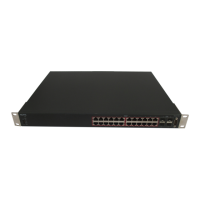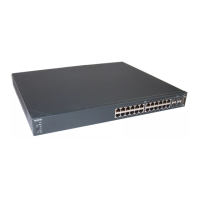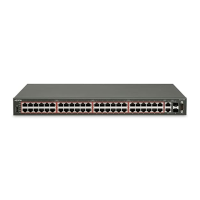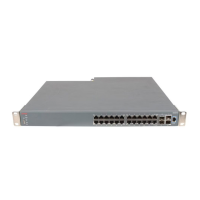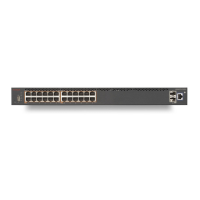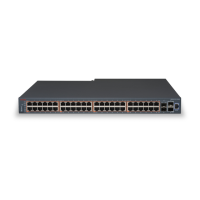3. In the work area, click the PoE Ports tab.
4. To select a switch port to edit, click the unit row.
5. In the unit port row, double-click the cell in the AdminEnable column.
6. Select a value from the list—true to enable PoE for the port, or false to disable PoE
for the port.
7. In the unit port row, double-click the cell in the PowerPriority column.
8. Select a value from the list.
9. In the unit port row, double-click the cell in the PowerLimit(watts) column.
10. Type a value.
11. To configure PoE for additional ports, repeat steps 4 through 10 .
12. Click Apply .
Variable definitions
Use the data in the following table to configure PoE for a one or more switch or stack ports.
Variable Value
Unit Indicates the switch position in a stack.
Port Indicates the switch port number.
AdminEnable Lets you enable or disable PoE on this port.
By default, PoE is enabled.
DetectionStatus Displays the operational status of the power-device detecting mode
on the specified port:
• disabled—detecting function disabled
•
searching—detecting function is enabled and the system is
searching for a valid powered device on this port
• deliveringPower—detection found a valid powered device and the
port is delivering power
• fault—power-specific fault detected on port
• test—detecting device in test mode
• otherFault
Important:
Avaya recommends against using the test operational status.
PowerClassifications
Classification is a way to tag different terminals on the Power over
LAN network according to their power consumption. Devices such
System configuration using Enterprise Device Manager
238 Configuration — System April 2011

